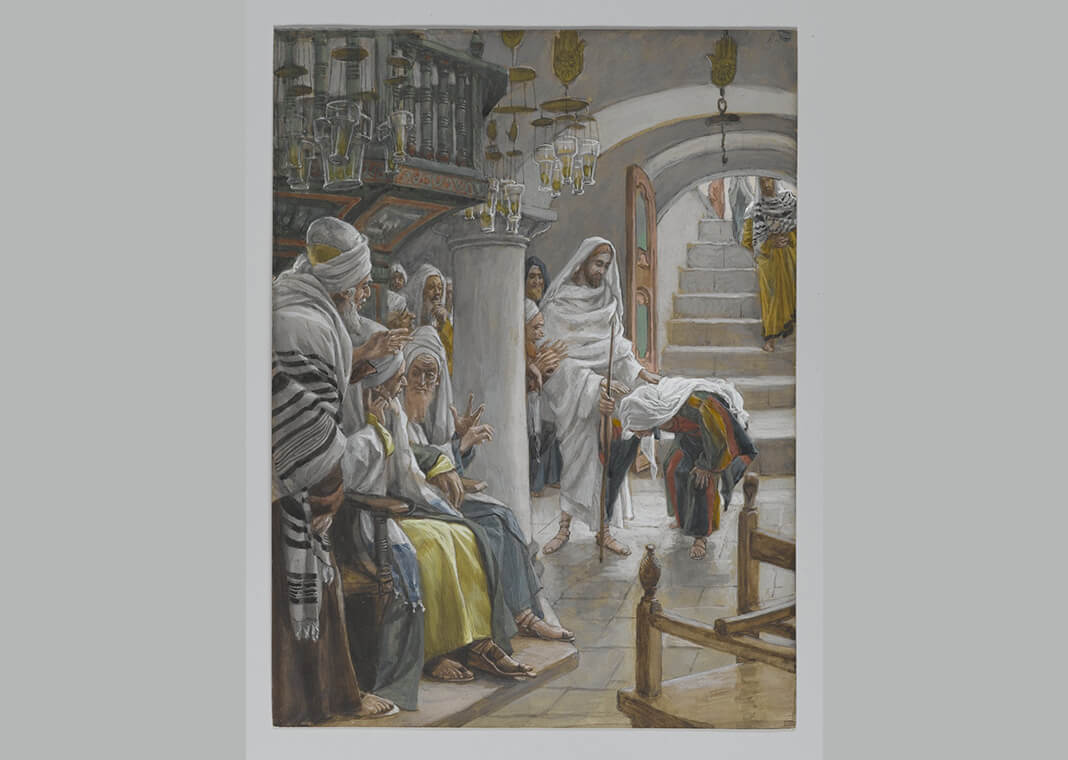
The Second Week of the Spiritual Exercises encourages us to ask for the grace to know Jesus, the man who drew people to himself then and now. His gentleness and compassion for those who were brought to him for healing is easy to see. Many couldn’t come on their own. Most had only hope that they might be healed. In Luke 13:10–17, we see another side of Jesus, the Noticer. It was the sabbath, and he was teaching in the synagogue. Even so, he was keenly aware of the woman bent over in the shadows. He saw her standing at a distance, listening to every word as she hid along the wall. How many times had she been mocked, ignored, or shoved as she awkwardly made her way there to pray like everyone else? She wasn’t thinking about being healed. The thought never occurred to her. She only wanted to listen.
In contemplation during the Second Week, I became that woman:
Jesus shocked me when I heard, “Woman, come here.” He was a kind, young rabbi. I had seen him be so. Why is he calling me? Walking is so hard, and they will make fun of me—again. I can’t often look into people’s eyes because I am so bent over, but he was sitting, and our eyes met. Their warmth and knowing encouragement overcame my dread of exposing my twisted form. In that moment, everyone but Jesus disappeared. I was walking in my slowly shuffling way yet felt like I was floating. I wasn’t embarrassed or afraid. His eyes held me and gave me strength for the next step. I was safe.
Jesus sat patiently until I reached him. Then he stood. Placing his hands on my shoulders, he said, “Woman, you are set free from your infirmity.” I needed his strong hands to steady me as I stood straight and tall for the first time in many years. Our eyes met again through smiling tears.
That unnamed woman is all of us. Her healing was physical, but more precious was the emotional and spiritual healing that filled her and allowed her to stand and rejoin her world.
We all face struggles and challenges. However different they might be, our common path to holiness is a daily stumble of steps hoping to find a way forward to Jesus. He offers each of us a choice. We can stay in the safe shadows of our lives or choose to come to him as we are, with all the wounds and burdens we carry that bend us down. The compassionate invitation to “Come here” is not to embarrass us but to help us know that he wants to free us. It is the unspoken, “l will help you in every step of your journey,” that pours out the graces we need to see the love in his eyes, hear the love in his voice, and have the courage to take the next step toward him and be healed.
From what burdens will we ask him to free us? Where does he want us to go now as we stand tall in his love? Jesus wants to show us how to enter our new lives and share the love and freedom we have been given.
Image via the Brooklyn Museum. James Tissot (French, 1836-1902). The Woman with an Infirmity of Eighteen Years (La femme malade depuis dix-huit ans), 1886-1896. Opaque watercolor over graphite on gray wove paper, Image: 9 1/2 x 7 1/8 in. (24.1 x 18.1 cm). Brooklyn Museum, Purchased by public subscription, 00.159.144 (Photo: Brooklyn Museum, 00.159.144_PS2.jpg).
